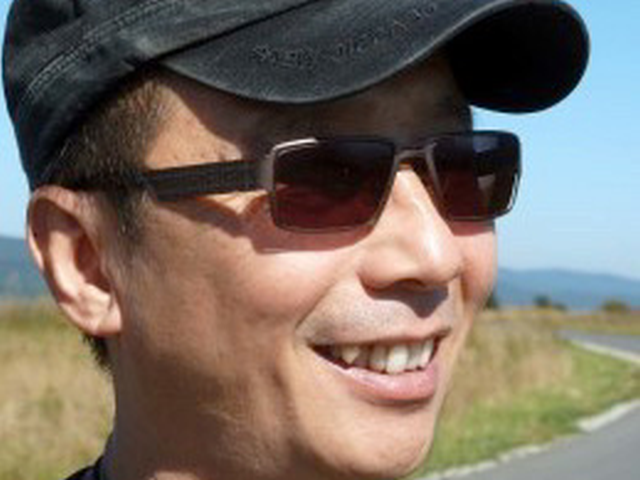Li Jie
Body Weight Is Not About Weight - How to Preserve Body Weight According to Huang Di Nei Jing's 5 Constitutions
Ling Shu Jing Acupuncture for Treatment of Complex Zang Fu Diseases - Application of Ling Shu Jing’s Ju Ci and Miu Ci Needling Methods and 5 Shu Points

PhD finished his master training at Bei Jing Medical University China in 1989. In 1997, he finished his PhD and post doc study in physiology at Nijmegen University, The Netherlands. He has been engaged in TCM as a teacher and practitioner for more than 20 years. Dr. Li Jie is one of the founders of Qing Bai TCM Academy as well as the TCM Classical Research Institute in the Netherlands (www.tcmcri.org).
Dr. Li Jie holds the position of Professor at the Shan Dong TCM University in China, academic supervisor for The Netherlands Acupuncture Association and chief teacher of Qing Bai TCM Academy. Since 2006, he is engaged with the ‘International TCM Master training program’ at Shan Dong TCM University China. In 2011, he lectured at Bei Jing TCM University and he is elected as the Council Member of the 1st Board of Committee of Examination and Evaluation of World Federation of Chinese Medicine Societies.
In 2012, he is elected as Vice Chairman of Special TCM Association of WFCMS.
Abstract
Body Weight Is Not About Weight - How to Preserve Body Weight According to Huang Di Nei Jing's 5 Constitutions.
Compared to BMI (Body Mass Index) in the western medical health concept, CCM (Classical Chinese Medicine), in Huang Di Nei Jing, the classical text, describes another point of view of human body weight. In Chapter 59 of Ling Shu Jing, it gives 3 types of over weight: Gao (phlegm accumulation type), Zhi (fat accumulation type) and Rou (flesh accumulation type). Particularly, in Chapter 64 of Ling Shu Jing, 5 different constitutions of human body and 25 personal characteristics of people according to the frequencies of meridian navigation have been described in details. Therefore, in CCM point of view, water, wood, fire, earth and metal type of body constitution has its own ‘BMI’. In this lecture, Dr. Li Jie will share his CCM knowledge and practical experiences in dealing with today’s body weight issues.
The following aspects will be involved:
1. The mechanisms of different type of over weight according CCM theories
2. Introduction about 5 type body constitutions and 25 types of personal characteristics in Chapter 64, Ling Shu Jing
3. Introduction of CCM Pulses and Tongue diagnosis in 5 type constitutions and 25 personal characteristics in clinical practices
4. Clinical applications of Jing Fang (Shang Han Lun and Jin Gui Yao Lüe formulas) herbal medicine and Ling Shu Jing Acupuncture in treatment
of different type of over weight
Ling Shu Jing Acupuncture for Treatment of Complex Zang Fu Diseases - Application of Ling Shu Jing’s Ju Ci and Miu Ci Needling Methods and 5 Shu Points.
Huang Di Nei Jing is the original CCM (Classical Chinese Medicine) text for acupuncture. It says that ‘A good acupuncturist knows how use yang meridians to treat yin diseases and use yin meridians to treat yang diseases; use lower points to treat upper diseases and use upper points to treat lower diseases; use left points to treat right diseases and use right points to treat left diseases; use four sides points to treat middle diseases.’ This is the principle of CCM Acupuncture. In Chapter 63 of Su Wen and Chapter 7 of Ling Shu Jing, it introduces Miu Ci (缪刺) and Ju Ci (巨刺) needling methods. These two methods follow the above principle and have highly clinical effectiveness.
In this lecture, Dr. Li Jie will guide into CCM Ling Shu Jing Acupuncture in following issues:
1. Study and practice Ling Shu Jing needling methods of Miu Ci and Ju Ci
2. How to make the points combination, particularly Wu Xing and Wu Shu points combination and use Miu Ci and Ju Ci methods in clinical
applications
3. Introduce Ling Shu Jing Acupuncture Pulses in clinical evaluation of acupuncture treatment
4. Introduce CCM Ling Shu Jing Acupuncture methods of ‘3 points combinations’ for all kinds of pain treatment; ‘4 points combinations’
for tonify qi and blood; and ‘5 points combinations’ for damp-phlegm accumulation and blood stasis.
